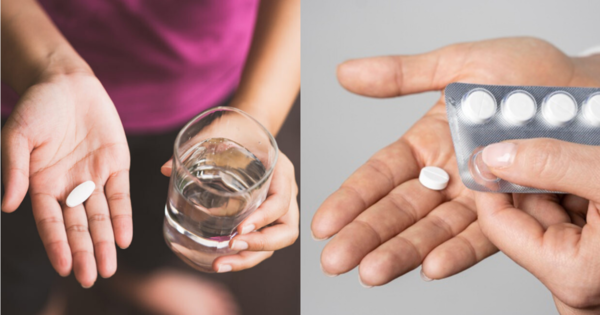A recent study found that most Malaysians tend to delay or not get treatment when experiencing common pains like headaches
Image via SAYS
According to the Global Pain Index study by GlaxoSmithKline Consumer Healthcare (GSK)⁸, up to 85% of Malaysians have experienced some sort of pain in the last year. However, Malaysians are less likely to receive treatment – only 48% of Malaysians take pain medication compared to 65% globally.
Instead, Malaysians would rather sleep it off, wait for it to go away, or not treat it at all.
The sad thing is that pain affects our wellbeing and everyday life, but only 38% of Malaysians choose to treat it immediately
Image via SAYS
The same study found that Malaysians feel the need to persevere through their pain. In fact, 80% of them said they were tough enough to handle their pain.
However, 2 in 3 Malaysians acknowledged that pain has a negative impact on their ability to enjoy life as usual. 74% of the respondents said they could not be happy because of their pain, while 58% of them said they felt useless when experiencing pain.
While over-the-counter medicine like paracetamol is readily available to Malaysians, some are still hesitant to use it
Paracetamol has been commonly consumed by Malaysians, which some brands has been around for many years and is proven to help treat common pains. But some Malaysians still avoid taking it because preference of natural and they’re worried about medication safety, dependency, and side effects.
To help you understand how paracetamol can help you manage your pain, we wanted to debunk some of the most common myths Malaysians still believe about Paracetamol:
All in all, paracetamol is an effective way to relieve various kinds of pain. However, if you’re unsure whether you should take it, always consult your doctor or a medical practitioner.
You can find paracetamol at your local pharmacy or grocery store.
Sources:
1. Schug SA. Combination analgesia in 2005 a rational approach on paracetamol. Tramadol. Clin Rheumatol, 2006: 25 (Suppl1): S16-S21
2. Sweetman S (Ed), Martindale: The complete drug reference. London: Pharmaceutical Press. Electronic version accessed 12 May 2016.
3. Clarke GD, et al. Int JPharn Pract 2008;16;1.4
4. Antman EM, Bennett JS, Daughtery A, Furberg C, Roberts H, Taubert KA, Circulation, 2007 Mar27;115 (12):1634.42
5. Graham GG, Scott KF, Day RO, Tolerability of Paracetamol Drug Safety, 2005;28(3):227-40
6. Gaul C. Eshalier A. Dose Can Help to Achieve Effective Pain Relief for Acute Mild to Moderate Pain with Over the Counter Paracetamol? Open Pain Journal, 2018.11,12.2.
7. CADTH 2016, 1000 mg versus 600/650mg Acetaminophen for Pain or Fever: A Review of Clinical Efficacy. Canadian Agency for Drugs and Technologies in Health. Viewed on 20 April 2020
8. GlaxoSmithKline. Global Pain Index 2020 – Malaysia Report
9. Responsible self‐medication: perceived risks and benefits of over‐the‐counter analgesic use
10. Jackson CH, MacDonald NC, Cornett JW. Acetaminophen: a practical pharmacologic review. Can Med Assoc J 1984: 131(1):25-32
The information provided is for educational and communication purposes only and it should not be construed as personal medical advice. Information published in this article is not intended to replace, supplant or augment a consultation with a health professional regarding the reader’s own medical care.
Trade marks owned by or licensed to the GSK group of companies. PM-MY-PAN-20-00054

